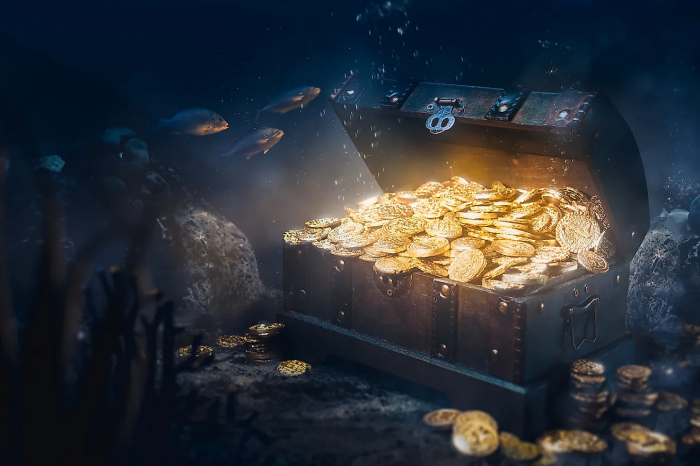Throughout history, treasure and shipwrecks have captivated our imaginations. Many significant and unique items have been salvaged from the depths of the ocean, each telling a story about our world. Underwater archaeologist Mensun Bound, who led the exploration team that discovered Ernest Shackleton’s ship Endurance, shares insights into some of the most important artifacts unearthed from shipwrecks. His new book, Wonders in the Deep, chronicles these findings and the rich history they represent.
A Cannon from the Battle of Trafalgar
One of the most notable artifacts is a cannon from HMS Agamemnon, Lord Nelson’s first major command and his favored ship. Bound explains the significance of Agamemnon: “It was the ship on which he first fought the French and where he met the love of his life, Lady Hamilton.” The ship played pivotal roles in several conflicts, including the American Revolutionary War, the French Revolutionary War, and the legendary Battle of Trafalgar.
During the latter battle, Agamemnon fought alongside HMS Victory, positioned just five or six ships behind it. Unfortunately, the ship eventually ran aground off the coast of Uruguay while pursuing a fleet of French vessels and became stuck on a mudbank. Records indicate that the crew managed to salvage all but one of the ship’s guns. Bound notes a peculiar incident: “In the record, there is a very clear description of how they dropped one in the water by mistake.”
In a remarkable turn of events in 1997, Bound discovered this lost cannon using an acoustic sonar device. “We didn’t really expect to find it, but it stood out: a cannon in profile,” he recalls.
Upon cleaning the iron cannon and removing layers of corrosion, Bound found a number that matched an archival record. This number indicated the cannon had been tested and refitted after being fired during the Battle of Trafalgar. As such, it is recognized as the only known cannon proven to have been fired in this historic sea battle, which significantly altered the course of history and dashed Napoleon’s ambitions of conquering England.
A Bible from Shackleton’s Endurance
Another remarkable artifact is a Bible recovered from Shackleton’s Endurance. In 1914, Shackleton and his 27-member crew embarked on a daring expedition to Antarctica, aiming to become the first to cross the continent. This mission marked the tail end of the so-called “heroic age” of Antarctic exploration.
However, the journey took a dramatic turn when the ship became trapped in pack ice, forcing the crew to abandon Endurance along with most of their personal belongings. “They wanted to try to get to land with the dogs, so they could only carry a tiny number of personal possessions with them: just a couple of pounds in weight,” explains Bound.
The salvaged Bible serves as a poignant reminder of the crew’s harrowing experience and their reliance on faith during their perilous journey. It also represents the enduring spirit of exploration and survival that characterized Shackleton’s crew as they faced unimaginable challenges in one of the harshest environments on Earth.
The Rich Tapestry of Salvaged Treasures
The treasures salvaged from shipwrecks not only provide glimpses into maritime history but also highlight the rich tapestry of human experience. Bound’s exploration of these artifacts reveals their stories and the cultural significance they carry.
Many of these items reflect the times in which they were created, revealing insights into the technology, trade, and lifestyles of past societies. For example, Bound recounts other unique finds, such as navigational instruments and personal items, which help to piece together the lives of those who traveled on these vessels.
These artifacts also raise questions about the preservation of history. Each item recovered from the sea has its own journey, and their condition often reflects the environments they have endured. The process of conserving these treasures is critical, ensuring that future generations can learn from and appreciate them.
The Role of Underwater Archaeology
Underwater archaeology plays a vital role in uncovering these treasures and preserving maritime history. Bound emphasizes the importance of meticulous research and exploration. “Each expedition requires a blend of technology, historical knowledge, and a bit of luck,” he states.
Advanced tools such as sonar devices and remotely operated vehicles have transformed the field, enabling archaeologists to locate and explore shipwrecks with unprecedented precision. However, Bound stresses that the real value lies in understanding the context of these artifacts. “It’s not just about finding objects; it’s about telling the stories behind them,” he notes.
The collaborative efforts of archaeologists, historians, and conservationists are essential in safeguarding these treasures. Their work ensures that the stories of these shipwrecks and their artifacts continue to resonate, illuminating our understanding of human history and maritime heritage.
A Window into the Past
The artifacts salvaged from shipwrecks offer a unique window into the past, revealing stories of adventure, struggle, and resilience. Mensun Bound’s insights remind us that each object has the potential to unlock secrets about our shared history.
As we continue to explore our oceans, the potential for discovering new treasures remains vast. Every shipwreck carries with it the weight of history, waiting to be uncovered and understood. The journey of underwater archaeology is not just about recovering lost items but also about connecting with the human experiences that shaped our world.
Conclusion
In conclusion, the treasures salvaged from shipwrecks, such as the cannon from HMS Agamemnon and the Bible from Shackleton’s Endurance, highlight the rich history and significance of these artifacts. Mensun Bound’s exploration provides valuable insights into the maritime world, showcasing the importance of preserving our cultural heritage.
As we reflect on these discoveries, we are reminded of the adventures that lie beneath the waves, waiting to be explored. The ongoing work of underwater archaeologists ensures that the stories of our past will continue to inspire and educate future generations. With each artifact recovered, we gain a deeper understanding of the human journey and the enduring legacy of those who came before us.
Related topics:

